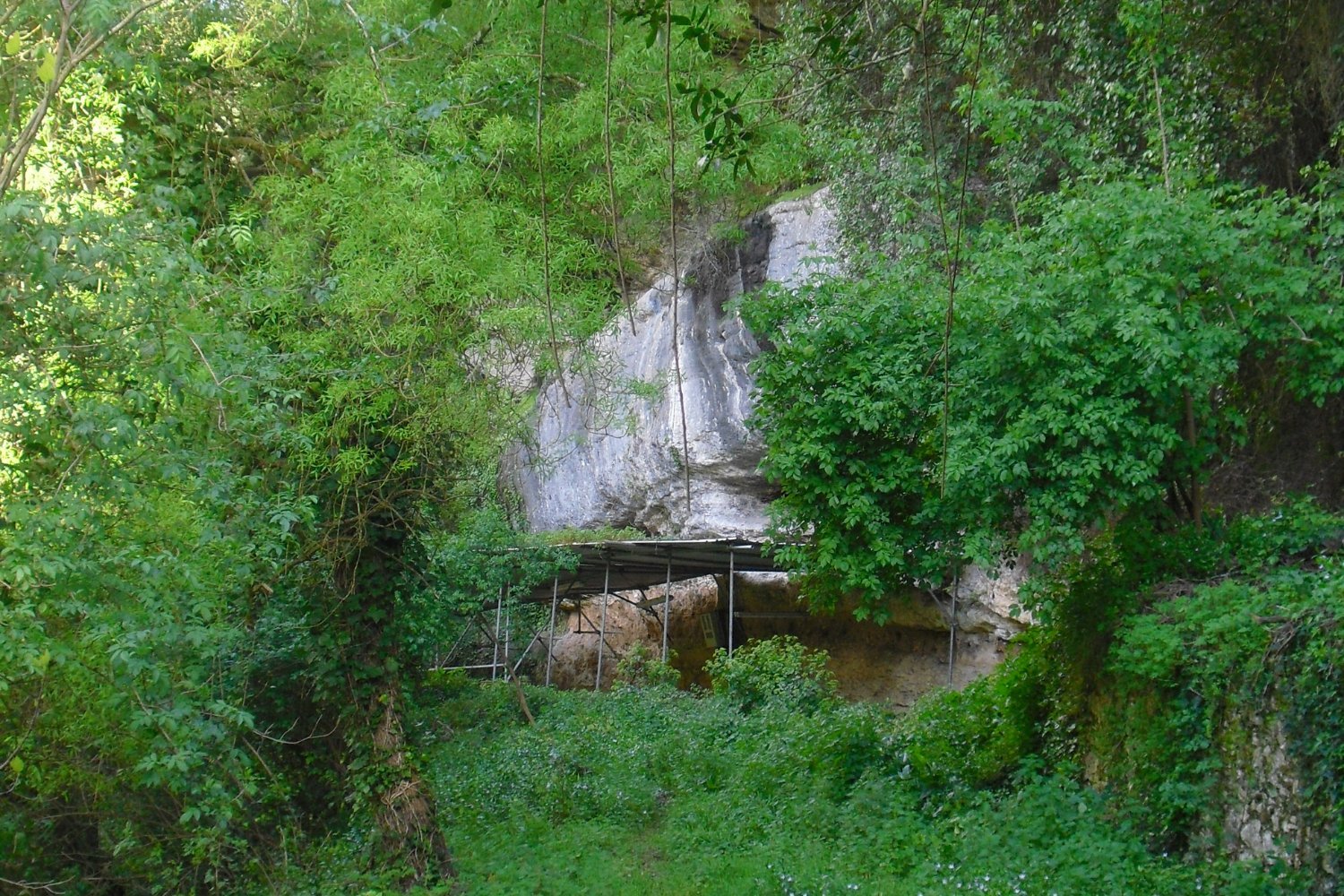A new radiocarbon dating technique has enabled scientists to precisely date the famous skeleton of a child with human and Neanderthal features, providing a more accurate timeline of the child’s life. The Lapedo Child, named after the valley in Portugal where it was discovered, was found in 1998 by students who stumbled upon a rock shelter containing the remains.
The excavation revealed the child’s nearly intact, ochre-stained skeleton, along with animal bones, charcoal, and beads made from marine shells. However, despite recovering a significant number of the child’s bones, archaeologists found the remains in relatively poor condition, making it difficult to reliably date the child until now.
The child was part of the Gravettian culture, which existed in Europe between 32,000 and 24,000 years ago and is known for its voluptuous Venus figurines. A 2023 genetic analysis revealed that Gravettian groups across the continent were not closely related, despite their presence for thousands of years.
Determining the age of the Lapedo Child is significant, as it would provide insights into when the population to which the child belonged inhabited the Portuguese coast. Additionally, the researchers would be able to prove a method that could be applied to other Gravettian and Cro-Magnon populations across Europe, revealing a more comprehensive timetable of early modern human occupation and migration across the continent.
According to Bethan Linscott, a researcher at the Oxford Radiocarbon Accelerator Unit at the University of Oxford and lead author of the study, “The fact that only a small amount of collagen could be extracted from the child’s bones, combined with the fact that the contamination couldn’t be fully removed, meant that the original dates were not reliable.”
Scientists have previously attempted to calculate a reliable radiocarbon date for the Lapedo Child on four different occasions, but were unable to nail down a reliable timeframe. However, the latest team believes they have succeeded using a new dating method that reduces the impact of contaminants in the sample and targets specific amino acids to determine the sample’s age.
“We were able to obtain a reliable direct date for the skeleton using a relatively new technique called compound-specific radiocarbon dating,” Linscott added. “Normally, collagen is extracted from bone and dated in bulk, but this method involves extracting a specific amino acid from the bone collagen—called hydroxyproline—and dating that instead. Hydroxyproline is rare elsewhere in nature and essentially acts like a collagen ‘fingerprint’, so by dating hydroxyproline, we can be sure that the carbon we’re dating is coming directly from the bone and not from contamination.”
The child’s remains were nearly destroyed when the site was terraced by the landowner to build a shed several years earlier, but the burial was left unscathed. Nearly 10 feet of archaeological material was destroyed in the process.

The team’s analysis of the child’s right radius yielded a new date estimate for the individual’s 4-or-5-year-long life: between 27,780 and 28,850 years ago.
“The new date for the child is consistent with original estimates for the age of the burial, but it has changed our interpretation of the burial events themselves,” Linscott told Gizmodo.
The charcoal beneath the child was previously thought to be a ritually burned twig for the Lapedo Child’s grave, but the charcoal predates the child. The grave also contained red deer pelves, thought to be meat offerings, but also older than the child.
Linscott noted that the pelves still may have been placed there intentionally as part of the burial, perhaps as support, and the rabbit vertebra dates indicate that the animal was placed ritually, perhaps as a symbolic offering for the grave.
Hydroxyproline dating can be used to recalibrate the timing of human presence across Europe (and beyond) with precision. The method has been used on Neanderthal groups, and could continue to refine scientists’ understanding of early modern humans and Neanderthals’ movements and occupations across the continent.
The approach could also help refine estimates of ancient human relatives worldwide in the future, providing a more comprehensive understanding of human history and migration patterns.
Source Link





